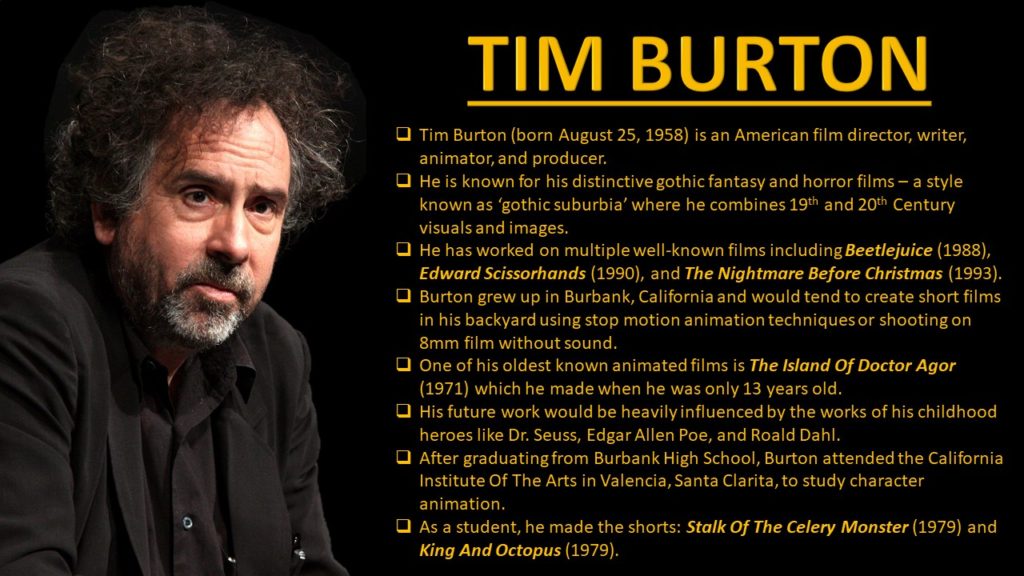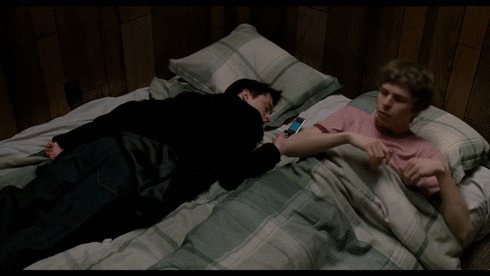


















Roger Shepard is an American cognitive scientist and author of the ‘Universal Law Of Generalization’ (1987). The auditory illusion, Shepard tones, are named after him. He began his research on auditory illusions during his years at Bell Labs, where his colleague Max Mathews was experimenting with computerised music synthesis. Musicians and sound-effect designers use Shepard tones to create special effects.
— — — — — — — — — —
Shepard Tone – a sound consisting of a superposition of sine waves separated by octaves. When played with the bass pitch of the tone moving upward or downward, it is referred to as the Shepard scale. This creates the auditory illusion of a tone that seems to continually ascend or descend in pitch, yet which ultimately gets no higher or lower.

A director is the person who tells other people how the movie should be displayed to the audience. They do this with the help of all the people during production from the set designers to the cinematographer to the editors
“Directors are the creative leads of the film. They hold the creative vision throughout the whole process, from pre-production through to the final edit.
They are employed by the executive producer or producer, who is ultimately in charge of a production. Directors start with a script, and work with a screenwriter and sometimes a script editing team. It’s not uncommon for the director to be the screenwriter as well.
It is the job of a director to imagine the script in a visual form.”
Reservoir Dogs (1992) is a great example of direction in a film. The whole film hinges on the acting and drama between a group of robbers after a heist on a jewellery store. The premise mandates excellent communication between the director and the actors, and this was achieved in spades. The direction created the desired effect and made for an enjoyable movie

An inspirational practitioner of directing is Quentin Tarantino who directed movies such as Inglorious Basterds (2009), Kill Bill Vol 1 (2003), Pulp Fiction (1994) and Django Unchained (2012). His style of direction tends to be focused on the use of violence and conflict, however he still manages to attract a broad audience and the consistently high ratings proves this. He demonstrates that he can direct with finesse and quality.
Cut – The most common editing technique where two pieces of film are spliced together so that the film ‘cuts’ from one image to another.

— — — — — — — — — —
Fade – Can begin in darkness and gradually assume full brightness or the image may gradually get darker. A fade often implies that time has passed or may signify the end of the scene.

— — — — — — — — — —
Dissolve – Similar to a fade in which one image is slowly replaced by another. It can create a connection between images.

— — — — — — — — — —
Wipe – A new image wipes off the previous image. A wipe is more fluid than a cut and quicker than a dissolve.

— — — — — — — — — —
Flashback – Cut or dissolve to action that happened in the past.

— — — — — — — — — —
Shot-Reverse-Shot – A shot of one subject, then another, then back to the first. It is often used for conversation or reaction shots.

— — — — — — — — — —
Cross Cutting – Cuts between actions that are happening simultaneously. This technique is also called parallel editing. It can create tension or suspense and can form a connection between scenes.

— — — — — — — — — —
Eye-Line Match – Cut to an object, then to a person. This shows what a person is looking at and can reveal a character’s thoughts.

— — — — — — — — — —
Graphic Match – Occurs when the shapes, colours and/or overall movement of two shots match in composition, either within a scene or across a transition between two scenes.

— — — — — — — — — —
Match On Action – Refers to film editing techniques where the editor cuts from one shot to another view that matches the first shot’s action.

Wes Anderson – an American director and screenwriter known for the distinctive visual aesthetic of his quirky comedies.


— — — — — — — — — —
Edgar Wright – an English director and screenwriter who collaborates with many of the same people he has worked with in the past (specifically Simon Pegg and Nick Frost). He is known for satirical genre films with a unique editing style of rapid, dramatic montages.


— — — — — — — — — —
Guillermo Del Toro – a Mexican director and screenwriter known for creating horror/fantasy films that have emotional and thematic complexity.


Auteur – a French word used to describe a film director who influences their films so much that they rank as their author. Auteur directors generally have a certain style from film-to-film and often perform other roles besides directing such as: writing, editing, and acting in their own films.
— — — — — — — — — —

Andrew Sarris, a film critic for The New York Times, set out a complete definition for auteurs according to three main criteria:
1. Technical competence: Auteurs have to be at the top of their craft in terms of technical filmmaking abilities and should always have a hand in multiple components of filmmaking.
2. Distinguishable personality: Auteurs are separated from other technically gifted directors with their unmistakable personality and style – you can see shared filming techniques and consistent themes being explored between an auteur’s films.
3. Interior meaning: Auteurs make films that have layers of meaning and have more to say about the human condition. They go beyond the pure entertainment films produced by large studios, to instead reveal the filmmaker’s unique perspectives and thoughts on life.
Role 2:
Editors look through all the raw film footage and use the best clips in order to create one coherent film through the use of well placed cuts and transitions, making sure it aligns with the directors vision. They often manipulate the footage through the use of CGI and colour grading to make the visuals match the story and theme of the film. I’ll be taking inspiration from Paul Machliss, an Australian editor who’s edited ‘Scott Pilgrim vs The World’, ‘Shaun of the Dead’ and many more, often working on films with director Edgar Wright. Machliss has a choppy style which leads to fast paced scenes, and quick transitions which give the films comedic value due to the amount of cuts/transitions he adds. He often adds jump cuts where most wouldn’t deem it necessary, like pouring coffee into a cup, which give his style a unique flare as he doesn’t follow the usual linear pattern that most editors do.

A cinematographer is the person who translates the director’s vision into the camera. The cinematographer uses the many tools, such as lenses, depth-of-field, camera angles and lighting to achieve this. However, this job is only in production. They usually stay out of pre and post production.
“A cinematographer, also known as a Director of Photography, is in charge of the camera and the lighting crew. They’re the person responsible for creating the look, color, lighting, and for framing of every single shot in a film. The film’s director and cinematographer work closely together, as the main job of a cinematographer is to ensure that their choices support the director’s overall vision for the film.”
A cinematographer is in charge of the camera and the decision of which camera angles to use such as low angle shot or a high angle shot and the lighting such as side lighting or back lighting. They’re responsible for choosing a style for the film and they choose how each scene is framed. Cinematography is the art of story telling by using camera angles, lighting, zoom, focus and more. They are needed in pre and post production by planning out the scenes, shooting them and then combining them. A cinematographer that inspires me is Bruno Delbonnel who worked on Amelie. His style consists of a dreamlike soft light scenes which rely on having a warm tone and uses lots of yellows and green. His lighting tends to be soft lighting or big lights far away which makes the subject stand out against the background. He tends to light the subject from the side or behind so to add to the dreamlike effect and make the lighting not too harsh, he also positions the camera faced on the front of the character. With the combined tactics Bruno Delbonnel uses in his cinematography he can achieve a dreamlike style.